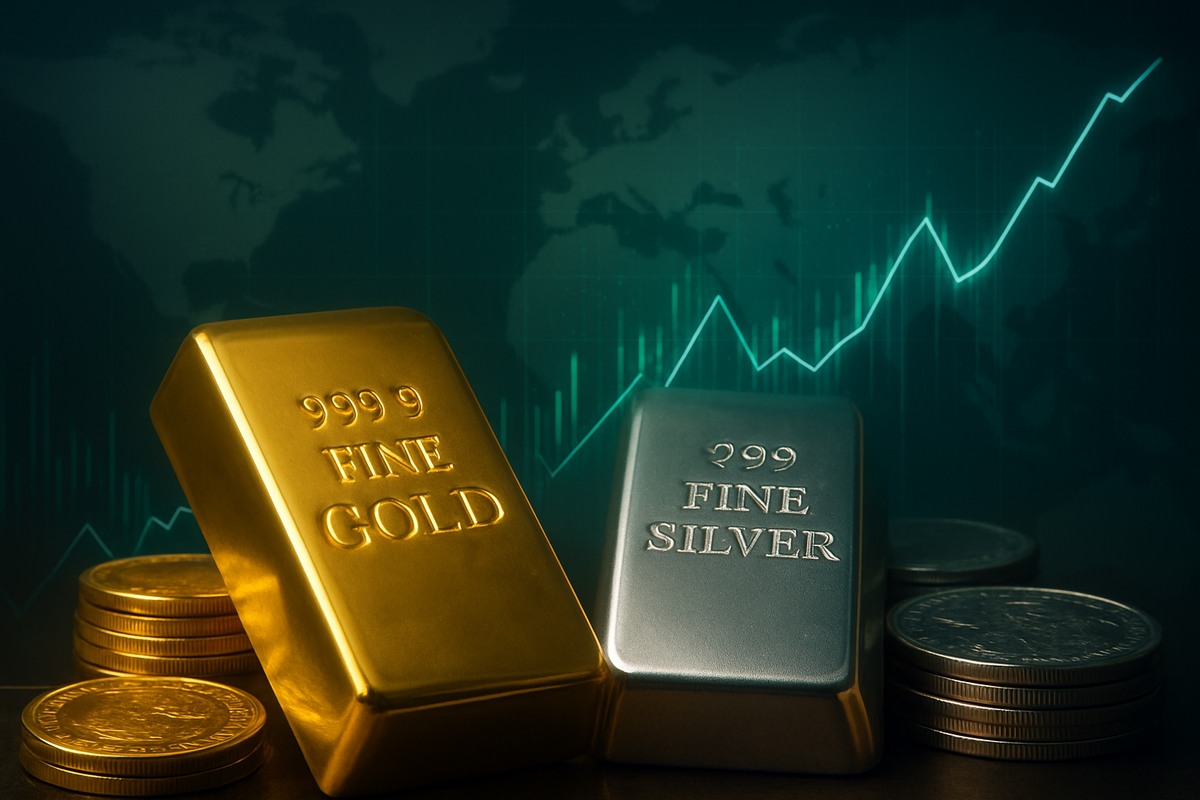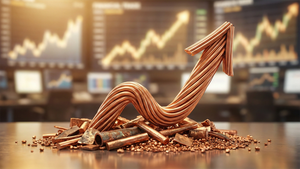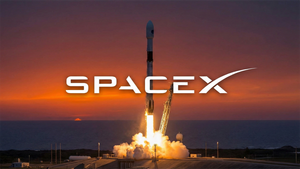
The precious metals market in 2025 has been nothing short of extraordinary, witnessing a robust surge in both gold and silver prices to unprecedented levels. This bullish trend is not merely a fleeting phenomenon but a deeply rooted response to a complex interplay of global economic uncertainties, persistent inflationary pressures, shifting central bank policies, and heightened geopolitical tensions. As investors navigate a landscape characterized by a prevailing "risk-off" sentiment, gold and silver have reasserted their traditional roles as safe-haven assets and hedges against instability, prompting a significant re-evaluation of portfolio construction and asset allocation strategies. The immediate implication for investors is a continued focus on these tangible assets as a bulwark against an unpredictable financial future.
An Unprecedented Rally: Gold and Silver Forge New Highs in 2025
The year 2025 has etched itself into the annals of financial history as a period of remarkable appreciation for precious metals, defying many conventional forecasts and establishing new benchmarks. Gold, the perennial safe-haven, has demonstrated exceptional resilience and upward momentum throughout the year. By September 24, 2025, it had recorded a staggering 44.5% year-to-date gain in USD terms, surpassing the $3,792.12 per ounce mark. This ascent culminated in October 2025, when gold surged past $4,300 per ounce, even touching peaks near $4,400 per ounce, establishing new all-time highs. Despite a subsequent correction in October, gold quickly recovered, reclaiming the psychologically important $4,000 threshold, signaling strong underlying demand. Forecasts from institutions like J.P. Morgan Research project gold to average $3,675/oz by Q4 2025 and climb towards $4,000 by mid-2026, with some analysts even eyeing $5,000 per ounce by 2026.
Silver, often referred to as "poor man's gold," has not only followed suit but, in many instances, has outshone its yellow counterpart in percentage gains. By September 24, 2025, silver achieved a 14-year high of $44.55 per ounce and soared to an all-time high of $54.47 per ounce by October 17, 2025, surpassing its 1980 record. The metal has advanced an impressive 66% year-to-date through late October 2025. Similar to gold, silver experienced a correction but demonstrated even stronger recovery momentum, surging over 4% to climb back above $48 per ounce. Experts like GoldSilver's Lead Analyst Alan Hibbard anticipate silver to return approximately 25% in 2025, reaching around $40, and potentially hitting an all-time high above $52.50 in 2026. Professional forecasts are targeting $59 per ounce for silver by late 2026.
The primary drivers behind this robust performance are multifaceted. Persistent inflation concerns continue to underpin gold prices, solidifying its role as a hedge against eroding currency value. Expectations of interest rate cuts throughout 2025 by central banks, as indicated by the CME FedWatch tool's 94.1% probability of Federal Reserve rate cuts by October 29, 2025, significantly reduce the opportunity cost of holding non-yielding assets. A weaker U.S. dollar further enhances the appeal of dollar-denominated bullion for international buyers. Geopolitical tensions, including ongoing conflicts in the Middle East and Europe, coupled with global instability, continue to fuel strong safe-haven demand.
Beyond these macroeconomic factors, specific dynamics are at play for each metal. Central banks globally are expected to continue their robust gold purchases, with forecasts suggesting around 900 tonnes in 2025, driven by diversification strategies and de-dollarization efforts. Investment demand for gold has been at record levels in 2023-24 and is expected to climb further. For silver, the market is grappling with significant supply constraints, facing its seventh consecutive year of deficits. Total silver supply has declined over the past decade, while demand has consistently outpaced production. This is exacerbated by growing industrial demand from green technologies such as solar energy projects and electric vehicle (EV) production, alongside increasing use in electronics and medical applications. The confluence of these factors has created a fertile ground for the extraordinary price appreciation observed in the precious metals market throughout 2025.
Corporate Fortunes: Winners and Losers in the Precious Metals Boom
The bullish precious metals market of 2025 has created a distinct landscape of winners and losers among public companies, with those boasting strong production profiles, low operating costs, and strategic market positioning poised for significant gains. Conversely, companies burdened by high costs, limited reserves, or an over-reliance on specific, price-sensitive demand segments may face headwinds.
Likely Winners:
Major and mid-tier gold and silver mining companies with lower All-in Sustaining Costs (AISC) are direct beneficiaries. Higher commodity prices translate immediately into enhanced revenues, expanded profit margins, and stronger cash flows.
- Newmont Corporation (NYSE: NEM), as one of the world's largest gold producers, stands to gain significantly from rising gold prices. Its scale provides stability, and effective cost management will amplify its profitability, potentially leading to higher earnings per share and positive stock performance.
- Barrick Gold Corporation (NYSE: ABX) is another major player whose extensive portfolio of mines provides diversified exposure to the bullish gold market, boosting revenue and profitability.
- Alamos Gold Inc. (TSX: AGI) has demonstrated significant operating leverage in a rising gold price environment. With projected production of 580,000 to 630,000 ounces in 2025 and AISC between $1,250 and $1,300 per ounce, it is well-positioned to capitalize on gold prices above $3,400 per ounce.
- Pan American Silver Corp. (NASDAQ: PAAS), a leading primary silver producer, will see its revenue and profitability significantly boosted by surging silver prices, especially given strong industrial demand. Its acquisition of a stake in the high-grade Juanicipio Silver Mine further enhances its production profile.
- First Majestic Silver (NYSE: AG), heavily reliant on silver revenue from its Mexican operations, will experience direct increases in revenue and profitability as silver prices climb.
Precious metals royalty and streaming companies are exceptionally well-positioned due to their unique business model. They provide upfront financing to miners in exchange for future production or revenue, benefiting from rising prices without incurring direct operational costs or exploration risks.
- Wheaton Precious Metals Corp. (NYSE: WPM) is a major player whose revenue is directly tied to the price of the metals they stream, leading to high margins as prices increase.
- Franco-Nevada Corporation (NYSE: FNV), a gold-focused royalty and streaming company, benefits from a diversified portfolio and a lean operating structure, offering exposure to rising commodity prices with lower operational risk.
- Royal Gold, Inc. (NASDAQ: RGLD) will see increased revenues from its stream and royalty agreements as gold and silver prices appreciate, with its lean operating structure allowing for significant profit capture.
Investment vehicles like iShares Silver Trust (NYSEARCA: SLV) and SPDR Gold Trust (NYSEARCA: GLD) are also direct beneficiaries, as strong inflows and rising commodity prices translate into positive performance for these ETFs.
Likely Losers (or those facing headwinds):
Companies with high AISC, significant debt, or those heavily reliant on gold jewelry demand could face challenges.
- High-Cost Gold and Silver Mining Companies: Miners with persistently high production costs per ounce will see their profit margins squeezed, even if prices rise. Their operational leverage works against them, making it difficult to fund new exploration or mine development. While specific examples are not uniformly available, any company whose AISC is close to or exceeds the average metal price will struggle.
- Companies heavily reliant on Gold Jewelry Demand: As gold prices surge, jewelry consumption has historically declined due to price elasticity. Companies whose revenue is significantly tied to this segment without diversification into other areas of gold demand may face reduced volumes and headwinds.
- Mining Companies with Environmental/ESG Challenges: Increased scrutiny and regulations regarding greenhouse gas emissions and other environmental factors can lead to higher operational costs, regulatory hurdles, and reputational damage, impacting profitability and stock performance. Companies failing to adapt to new ESG standards may find themselves at a disadvantage.
The impact on operations, revenue, and stock performance is clear: winners will see increased production, higher exploration budgets, soaring revenues, and appreciating stock prices, often with a multiplier effect beyond the commodity price itself. Losers, conversely, may face reduced investment, potential mine closures, stagnant or declining revenues, and underperforming stock prices, making them vulnerable in a highly competitive market.
A New Economic Paradigm: Wider Significance of Precious Metals Trends
The robust performance of precious metals in 2025 is more than just a market rally; it signifies profound shifts in broader economic and geopolitical landscapes. These trends have far-reaching implications, influencing global financial stability, trade dynamics, and the strategic decisions of nations and industries worldwide.
The current environment is characterized by persistent inflationary pressures across major economies, making gold an increasingly vital hedge against eroding purchasing power. Coupled with the anticipation of falling interest rates from central banks, the opportunity cost of holding non-yielding assets like gold and silver diminishes, further bolstering their appeal. This monetary policy pivot, driven by a consensus for easing, is a crucial underpinning for the precious metals market.
Geopolitical uncertainty remains a dominant theme, with ongoing conflicts and intensified trade frictions fueling a "flight to safety." This demand is not merely speculative but reflects a deeper structural shift towards tangible, non-counterparty assets in a fragmented global financial order. The increasing possibility of a global recession, with the IMF projecting a slowdown in global growth for 2025, further accentuates the demand for safe havens. Furthermore, a weaker U.S. dollar, driven by structural challenges within the U.S. economy, makes dollar-denominated precious metals more attractive for international buyers, contributing to global demand.
A significant ripple effect is observed in the central banking sector. Central banks, particularly in emerging markets, are intensifying their accumulation of gold as part of broader diversification and de-dollarization efforts. This strategic buying signals a realignment in global financial power and a growing reliance on tangible assets amidst uncertainty, challenging the long-standing dominance of the U.S. dollar. This trend also draws capital away from traditional equity and bond markets, especially those perceived as overvalued, contributing to volatility in other asset classes. Industrial users, particularly those reliant on silver for electronics and solar panel production, face increased production costs, potentially impacting profitability and consumer prices. Conversely, the automotive industry's shift away from internal combustion engines negatively impacts palladium demand but creates opportunities for platinum as a substitute.
Regulatory and policy implications are also emerging. Discussions around trade and tariffs, particularly from the U.S., could significantly impact the U.S. dollar's strength and create bifurcated pricing regimes for metals. Governments, like the U.S., are actively seeking to enhance domestic mineral production to secure a stable supply of critical minerals, potentially streamlining permitting processes and encouraging private investment. Central bank gold accumulation is also influenced by international regulations like Basel III, which classify gold as a high-quality liquid asset. Moreover, increased scrutiny through ESG (Environmental, Social, and Governance) regulations is creating headwinds for mining companies, influencing investment decisions and shaping future operational requirements.
Historically, the current market behavior echoes several precedents. Precious metals have consistently served as safe-haven assets during economic downturns and geopolitical crises, retaining or increasing their value inversely to traditional assets. Gold, in particular, has a long history of performing well as an inflation hedge, as evidenced by its substantial appreciation against the U.S. dollar's loss of purchasing power since 1971. During the 2008 Financial Crisis and the COVID-19 recession in 2020, gold and silver demonstrated their resilience, with gold rising and silver, after initial volatility, significantly outperforming during recovery phases. Periods of negative real interest rates, where inflation outpaces interest rates, have also historically been supportive of gold prices, a condition often prevalent during economic depressions. This historical context reinforces the current market's narrative, reaffirming precious metals' enduring role as a crucial component of diversified portfolios during times of profound global change.
The Road Ahead: Navigating Future Scenarios for Precious Metals
As 2025 progresses and we look towards 2026 and beyond, the precious metals market is poised for continued dynamism, offering both opportunities and challenges for investors and industry participants. The prevailing sentiment points to a continued bullish trajectory, albeit with anticipated periods of volatility and consolidation.
In the short-term (late 2025 - early 2026), gold is expected to consolidate near its elevated levels, with potential for further gains towards $4,100-$4,200 if it maintains above $4,040. However, a break below $3,900 could see it retreat towards $3,790. Silver, having shown stronger recovery momentum, is projected to remain pressured near $47.50–$48.20 but with significant upside potential if demand cues strengthen. Long-term forecasts for gold (2026 and beyond) remain robust, with LBMA consensus targeting $4,980 per ounce by late 2026, and some analysts even projecting $5,000. For silver, professional forecasts target $59 per ounce by late 2026, with some aggressive predictions reaching $60-$75 per ounce by the end of 2025 and potentially past $100 per ounce in the medium term, driven by persistent supply deficits and burgeoning industrial demand.
Several key factors will continue to influence this trajectory. Persistent inflation and central bank policies, particularly interest rate decisions, will remain paramount. Lower interest rate environments will continue to make non-yielding assets more attractive. Geopolitical tensions and challenges to the U.S. dollar's dominance, with central banks in emerging markets increasing gold reserves, will provide structural support. Crucially, silver's dual role as an industrial commodity means its price will be heavily influenced by industrial demand from green energy technologies (solar, EVs), electronics, 5G, and AI hardware. Ongoing supply constraints and mining challenges, including political instability and labor disruptions in key producing regions, are expected to exacerbate supply deficits, particularly for silver.
Strategic adaptations are crucial for market participants. Diversification remains key, with gold offering stability and silver providing growth potential tied to industrial demand. Dollar-cost averaging can help mitigate volatility. Investors should carefully consider the balance between physical assets (bars and coins) and paper assets (ETFs, mining stocks), understanding the trade-offs between direct exposure/counterparty risk and liquidity. For new investors, a gradual accumulation strategy during price dips is advisable. Professional investors are focusing on mining companies with large proven reserves, strong management, and stable political environments, anticipating premium valuations due to supply constraints. Industrial users of silver will increasingly prioritize supply chain resilience, potentially entering long-term off-take agreements or investing in recycling.
Emerging market opportunities are significant, driven by central bank demand from BRICS+ nations for diversification and de-dollarization. The renewable energy and electric vehicle sectors in these markets present substantial opportunities for silver demand. However, challenges include potential regulatory changes, such as China's reduced VAT exemptions for commercial gold transactions and enhanced export controls on silver, which could elevate costs and restrict supply. Political volatilities and proposals to raise mining royalties in key silver-producing nations could also curtail output.
Various scenarios could unfold. The most likely scenario is a continued bullish trend for both gold and silver, with gold consolidating near $4,000 and silver around $48-$50, followed by further gains. A high inflation/stagflation scenario would further reinforce gold's role as an inflation hedge. Conversely, a rapid economic recovery or a strong dollar scenario could introduce downward pressure. A supply crisis scenario, particularly for silver, could lead to an "explosion in price" if demand significantly outstrips available supply. While unexpected, a more hawkish monetary policy shift could also temper prices. The World Bank offers a more modest outlook, projecting a slowdown in the rally by 2027. Ultimately, the market will remain sensitive to geopolitical stability, central bank actions, and the evolving supply-demand dynamics within the industrial sector.
A Golden Era: Summarizing the 2025 Precious Metals Phenomenon
The year 2025 has undeniably marked a pivotal moment for precious metals, transforming what some might have considered a niche investment into a central component of global financial discourse. The extraordinary rallies witnessed across gold and silver are not merely cyclical upticks but rather a profound recalibration in investment strategies, driven by a confluence of deep-seated economic and geopolitical forces.
Key takeaways from this momentous year include gold's exceptional surge to new all-time highs above $4,300 per ounce, fueled by its unwavering role as an inflation hedge and safe haven. Silver, often overshadowed, demonstrated even more aggressive percentage gains, surpassing its 1980 record to hit $54.47 per ounce, propelled by robust industrial demand from green technologies and persistent supply deficits. The consistent buying by central banks, particularly from emerging economies, underscores a broader strategic shift towards diversification and de-dollarization, lending structural support to gold prices.
Moving forward, the market assessment remains largely bullish for both gold and silver into 2026 and beyond. The anticipated interest rate cuts by major central banks will continue to lower the opportunity cost of holding these non-yielding assets, making them increasingly attractive. Persistent geopolitical instability and global economic uncertainties will sustain safe-haven demand, while strong industrial uptake, especially for silver in rapidly expanding sectors like solar and electric vehicles, will continue to drive its price. Forecasts suggest continued appreciation, with gold potentially nearing $5,000 per ounce and silver targeting $59 per ounce or even higher in the medium term.
Final thoughts on significance and lasting impact point to precious metals having definitively re-established their credibility as essential assets for wealth preservation and systemic risk insurance. Their uncorrelated nature provides a crucial buffer against the volatilities of traditional equity and bond markets. The structural demand shifts, particularly from central banks and green industrial applications, suggest a lasting impact on how these metals are perceived and integrated into global financial systems, moving beyond short-term speculative interest. This era signifies a renewed appreciation for tangible assets in an increasingly digital and uncertain world.
What investors should watch for in coming months includes closely monitoring central bank monetary policy decisions, especially regarding interest rates, as these will directly influence the attractiveness of precious metals. Geopolitical developments, particularly any escalation or de-escalation of conflicts and trade disputes, will continue to shape safe-haven demand. Inflation trends, U.S. dollar strength, and industrial demand indicators for silver and platinum will also be critical. Furthermore, investors should keep an eye on supply chain resilience and potential disruptions from mining constraints, as these can exacerbate scarcity and price volatility. Technical market signals should be observed for potential buying opportunities during healthy corrections within the overarching bullish trend. The economic health and policy shifts in major consuming nations like China will also have a considerable impact on global precious metals trade and demand.
This content is intended for informational purposes only and is not financial advice




